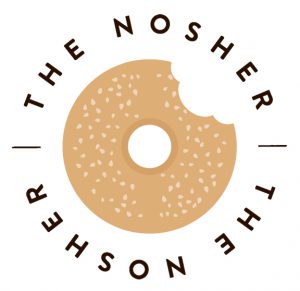Guava & Cheese Hamantashen

By Sandy Leibowitz, The Nosher
Guava, or guayaba in Spanish, is native to tropical areas such as Mexico, Central America, South America, and the Caribbean. Because of its proximity and availability, the fruit is a part of many Latino cuisines.
Guavas have a strong tropical fragrance and floral taste notes similar to papaya and grape. They can be prepared a variety of ways (think smoothies, cocktails, glazed over grilled meats, and even fish), but are especially wonderful mixed with cheese, such as queso fresco, because it provides the sweet and salty element that is so irresistible.
 If you cannot find queso fresco in your area, you can also use a mild feta (try soaking it in water to remove some of the saltiness). Another option is ricotta cheese supplemented with a nice pinch of salt.
If you cannot find queso fresco in your area, you can also use a mild feta (try soaking it in water to remove some of the saltiness). Another option is ricotta cheese supplemented with a nice pinch of salt.
Guavas can be found fresh from early spring through the winter, but in this recipe, I used a guava paste, which can be found year-round and is much easier to work with, as the many seeds have been removed.
You can find guava paste in the international section of most large supermarkets, and there is even kosher-certified guava paste. Please note: In this particular recipe, you want to make sure to use paste and not jelly, as jelly can ooze out too much.
14 oz. guava paste
1 cup of water
1 roll store-bought phyllo dough, thawed
1/2 cup (1 stick), melted butter
1 cup (approximately) queso fresco (or feta cheese or ricotta, as noted above)
1. Preheat your oven to 350 degrees.
2. In a saucepan over low heat, mix the guava paste and a half cup of water with a whisk until the mixture comes together and there are no lumps. Add the rest of the water if needed. Continue to add water and whisk thoroughly until you achieve the desired consistency. When it is the right consistency it should coat the back of a spoon, like a thick sauce. Set aside and allow to cool.
3. When working with the phyllo dough, it’s very important to gently roll it out flat and immediately cover it with a damp towel. This ensures that it doesn’t dry out while you are working with it.
4. Take approximately three to four sheets at a time and use a cookie cutter or a cup with a diameter of approximately 21/2 inches and make circles as close together as you can (to maximize the amount you can make on one stack of sheets). I recommend scoring the dough around the cutter or cup with the tip of a sharp paring knife.
5. Work quickly to fold up the edges of the circles and pinch on three corners to create a triangle. Brush them with a generous amount of melted butter to hold the edges together.
6. After you have made all your triangles, fill each one with a little bit of crumbled queso fresco and top with approximately one to two teaspoons of the guava sauce. Take care not to fill too much or the guava will melt a bit and ooze out of the triangle. Bake on a sheet pan lined with parchment paper about 15 to 20 minutes, until golden brown.
7. When the hamantashen are done, allow them to cool on a rack a few minutes before eating them. Note: They are best enjoyed soon after they come out of the oven, but you can also reheat them in a 350-degree oven for a few minutes until warm and enjoy the next day. Makes two dozen hamantashen.
Sandy Leibowitz is a trained chef, recipe developer and food blogger. Find more of her recipes at thekoshertomato.com.
To read the complete March 2019 Dayton Jewish Observer, click here.





